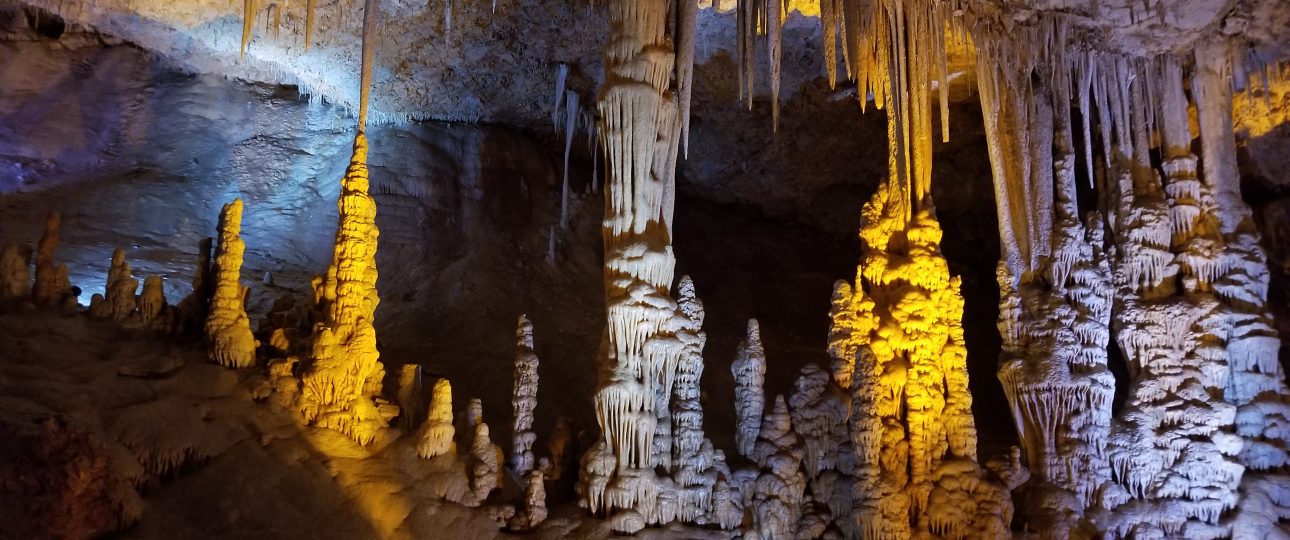Exploring Avshalom Cave: A Geological Marvel in Israel
Avshalom Cave, also known as Soreq Cave, is a fascinating geological site located near Hartuv, about 3 kilometers east of Beit Shemesh, Israel. Discovered accidentally in 1968 during quarrying operations, this cave is now a protected area within the Avshalom Nature Reserve. Its unique formations and historical significance make it a compelling destination for travelers interested in natural wonders and ancient history.
Marvel at Avshalom Cave’s Geological Formations
Upon entering Avshalom Cave, you’ll find yourself in a world sculpted by nature over hundreds of thousands of years. The cave spans 83 meters in length, 60 meters in width, and reaches a height of 15 meters. Its constant temperature and humidity levels have allowed for the preservation of remarkable stalactites and stalagmites, some of which are four meters long and date back 300,000 years. These formations sometimes meet to create impressive stone pillars.
One standout feature is the Giant’s Throat, a massive stalactite that commands attention with its size and intricate details. Another highlight is the Hanging Pillar, which appears to defy gravity as it hangs from the ceiling. The Curtain Cave section is adorned with formations that resemble delicate, flowing curtains, offering a surreal visual experience.
Historical and Scientific Significance
Beyond its visual appeal, Avshalom Cave holds significant historical and scientific value. The cave has been a focal point for paleoclimate research, providing insights into the region’s climate over the past 185,000 years. This research has earned the cave the nickname “the Rosetta Stone of climate history in the Eastern Mediterranean,” as noted by American geologist James Aronson.
While the cave itself does not contain direct evidence of ancient human habitation, its proximity to historical sites and its preservation efforts highlight its importance in understanding the broader historical context of the area.
Optimal Visiting Times and Practical Tips
To experience Avshalom Cave at its best, plan your visit during the spring or autumn months. During these times, the weather is mild, and the cave is less crowded, allowing for a more immersive experience. Note that the cave is closed to the public during winter to protect its delicate formations.
When planning your trip, consider renting a car for convenience. The drive from Tel Aviv takes about two hours, while it’s roughly an hour from Jerusalem. If you prefer public transportation, buses run from both cities to Beit Shemesh, where you can take a short taxi ride to the cave.
Key Features of Avshalom Cave
- Stunning stalactites and stalagmites, some dating back 300,000 years.
- The impressive Giant’s Throat stalactite and the gravity-defying Hanging Pillar.
- The enchanting Curtain Cave with its flowing formations.
- Significant paleoclimate research site, offering insights into historical climate patterns.
- Best visited in spring or autumn for optimal weather and fewer crowds.
- Accessible by car or public transportation from Tel Aviv and Jerusalem.
Avshalom Cave offers a unique glimpse into the geological and climatic history of the region. Whether you’re a geology enthusiast or simply curious about natural wonders, this site provides a captivating experience without the typical tourist crowds. Plan your visit carefully to ensure you make the most of this extraordinary destination.




